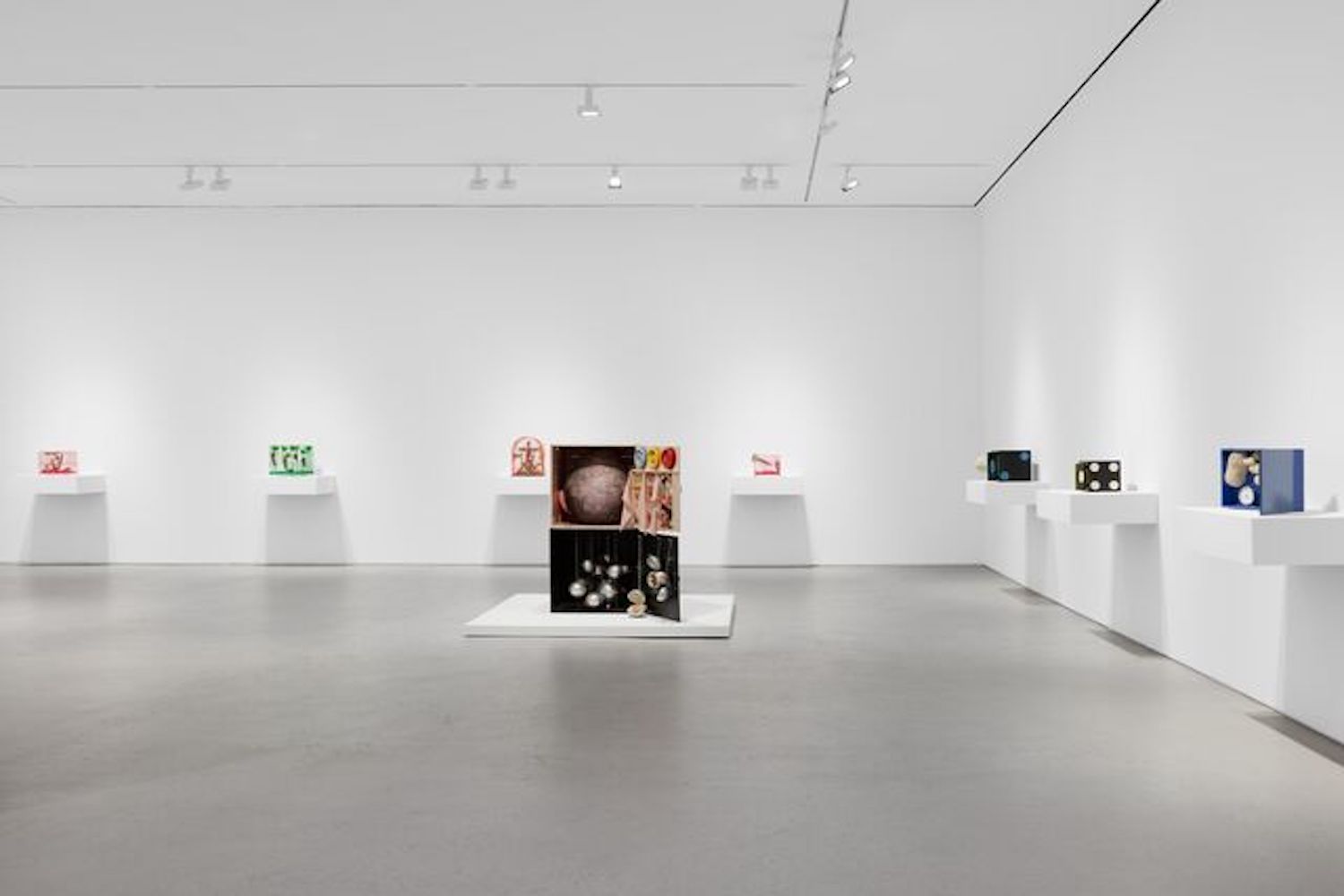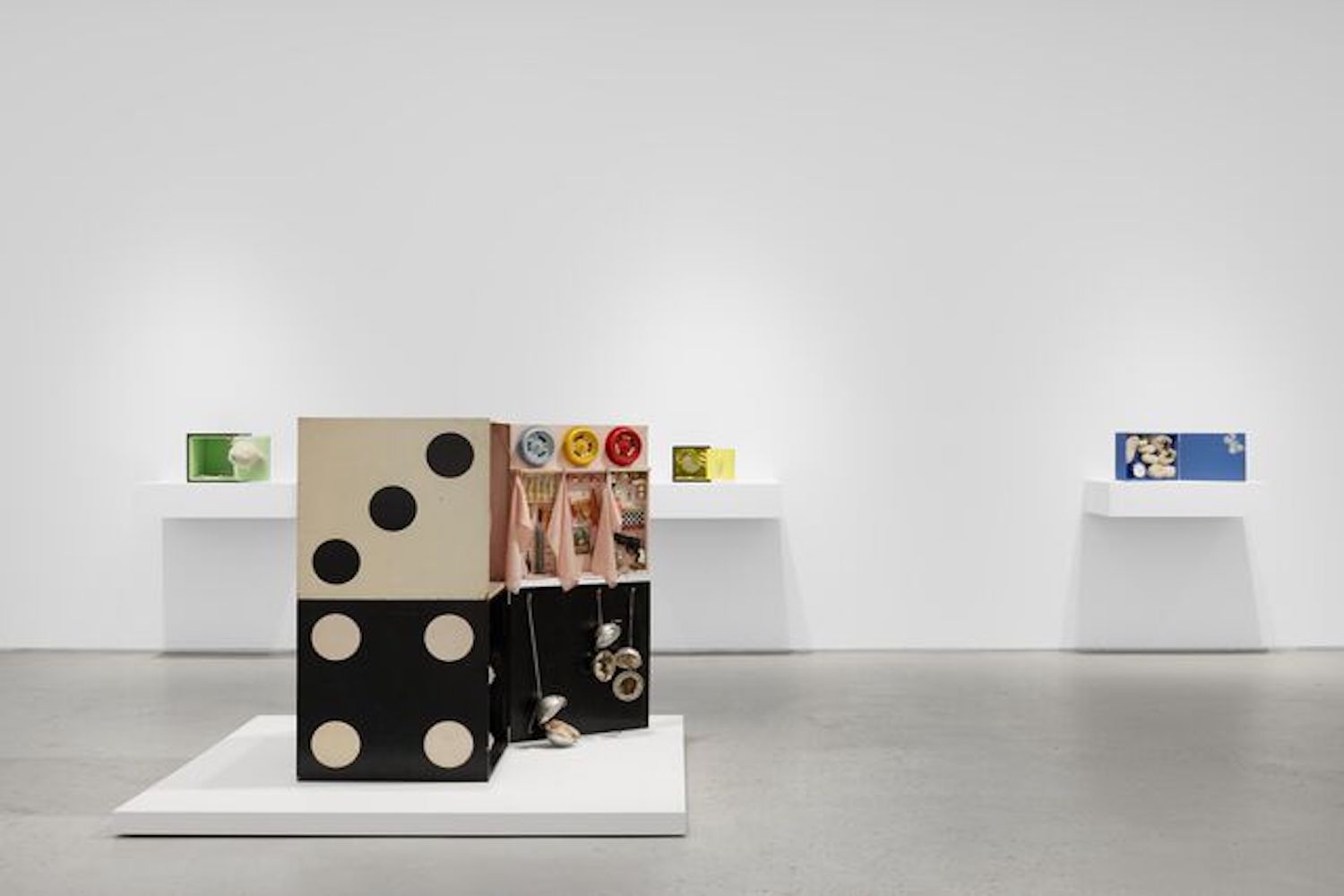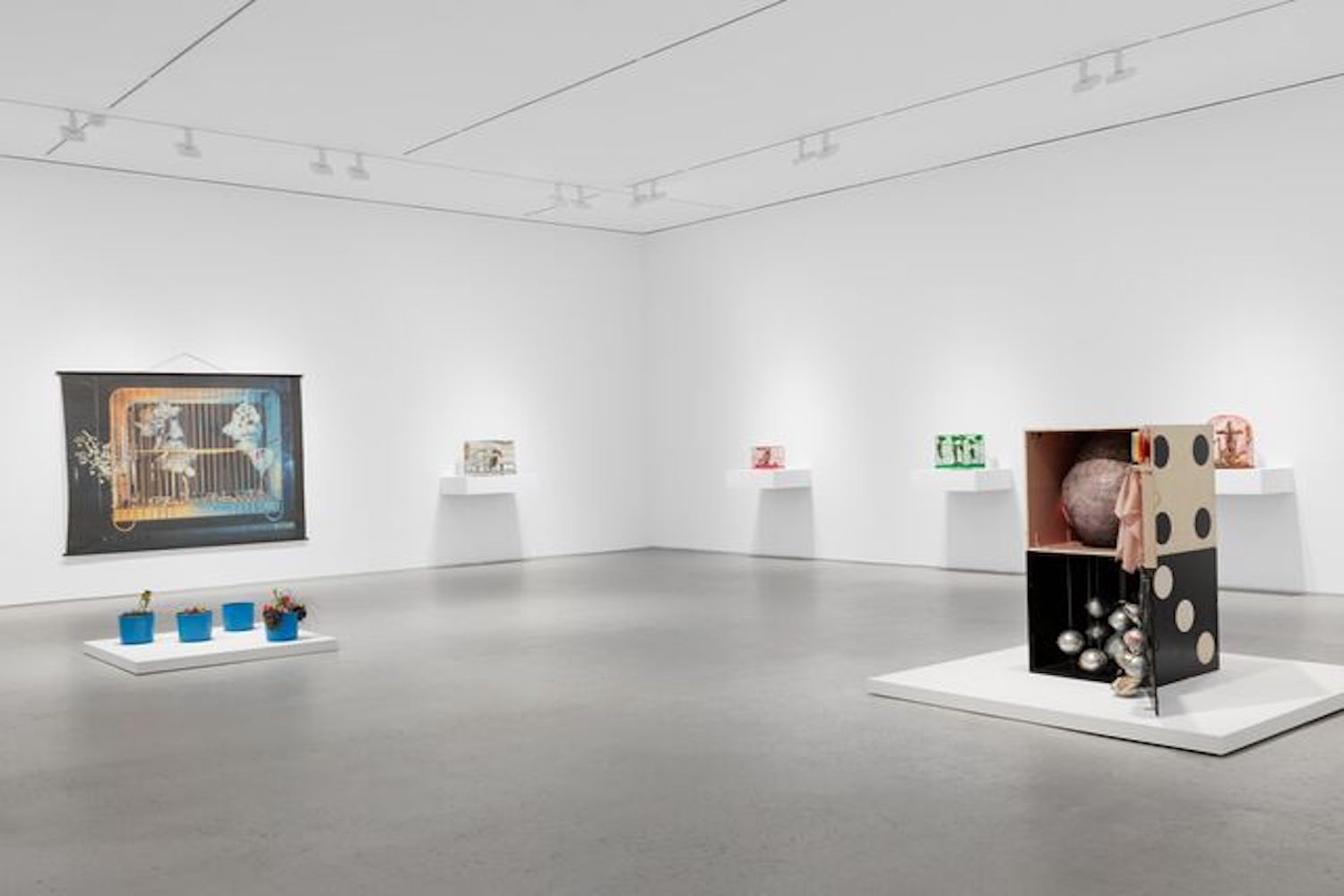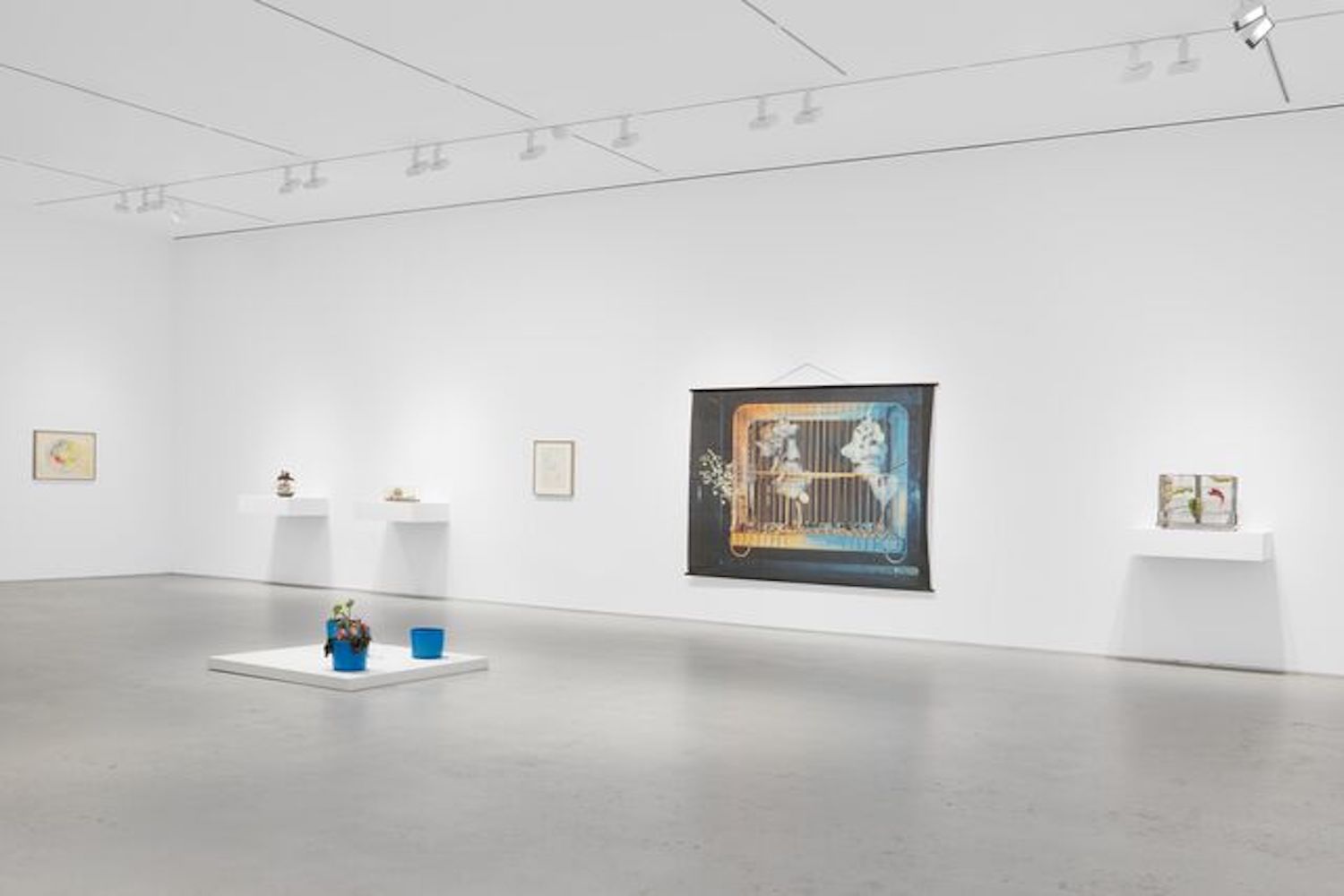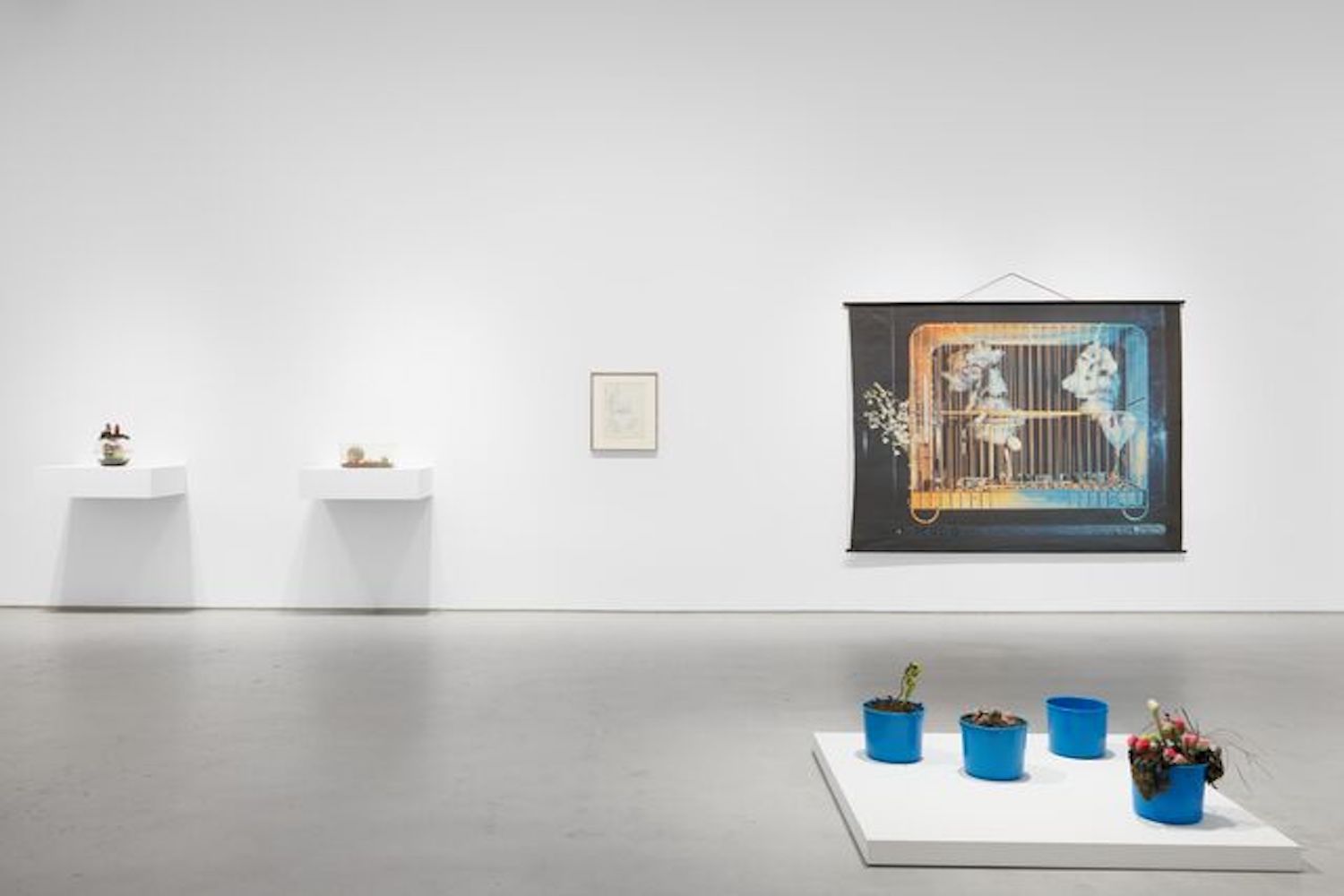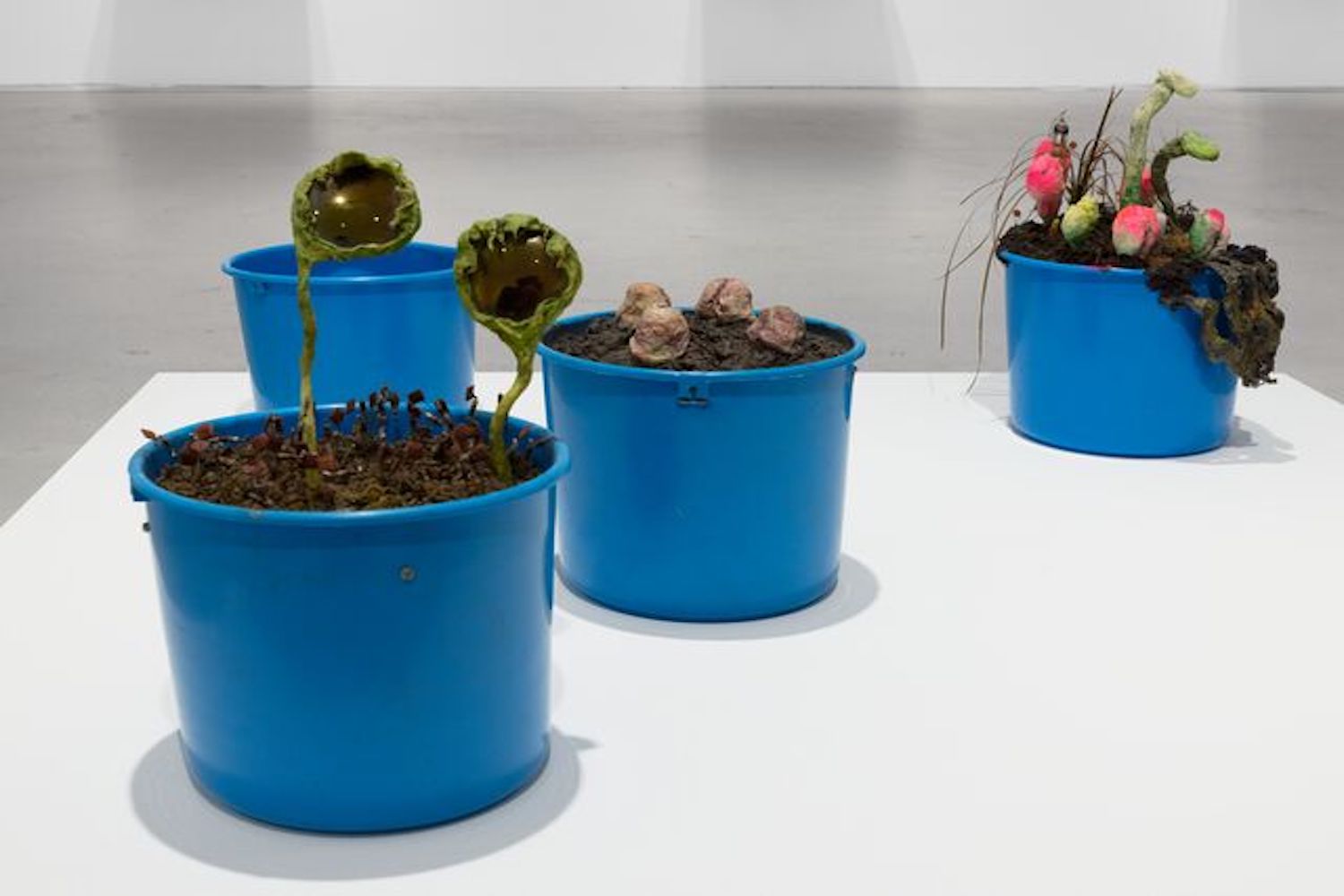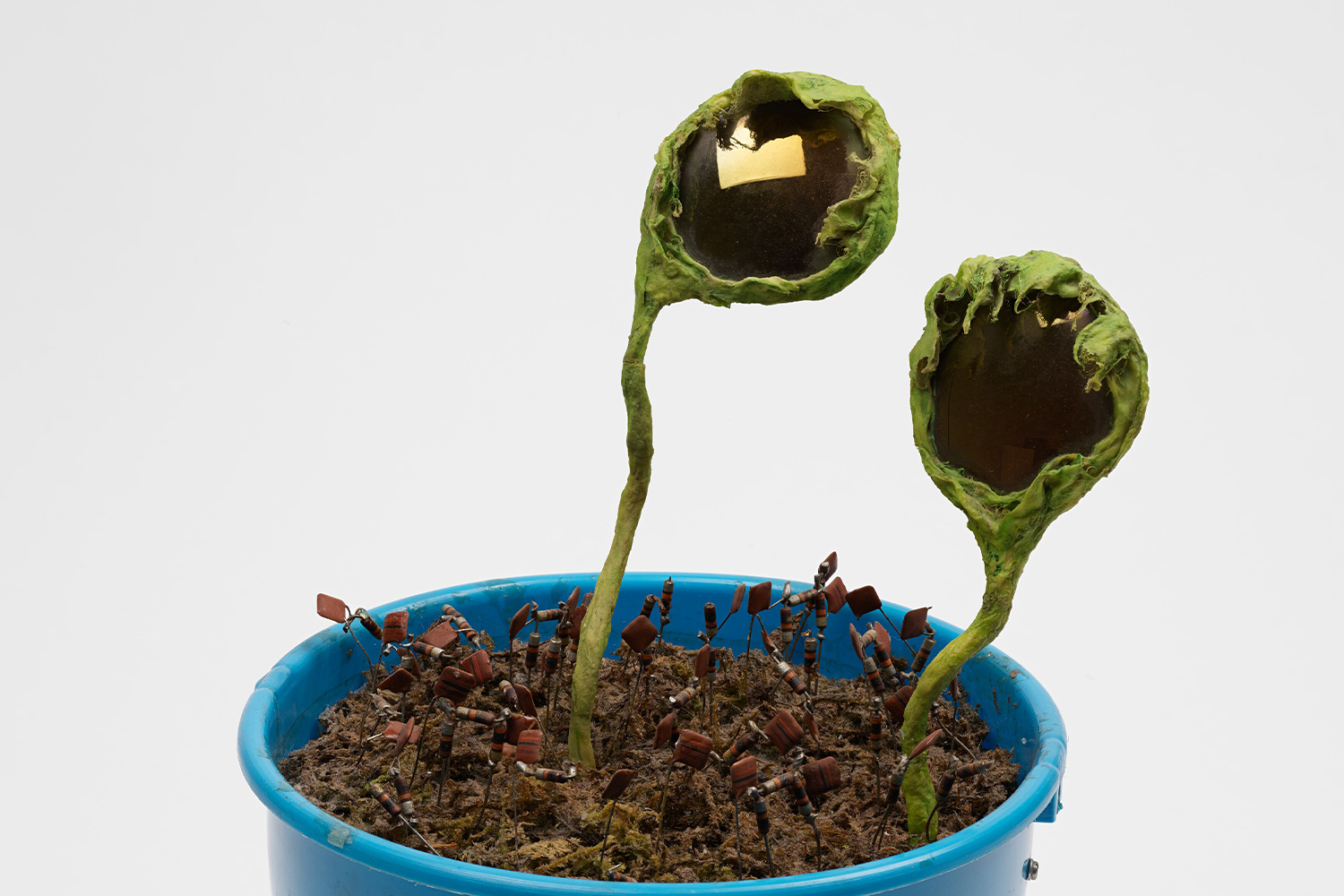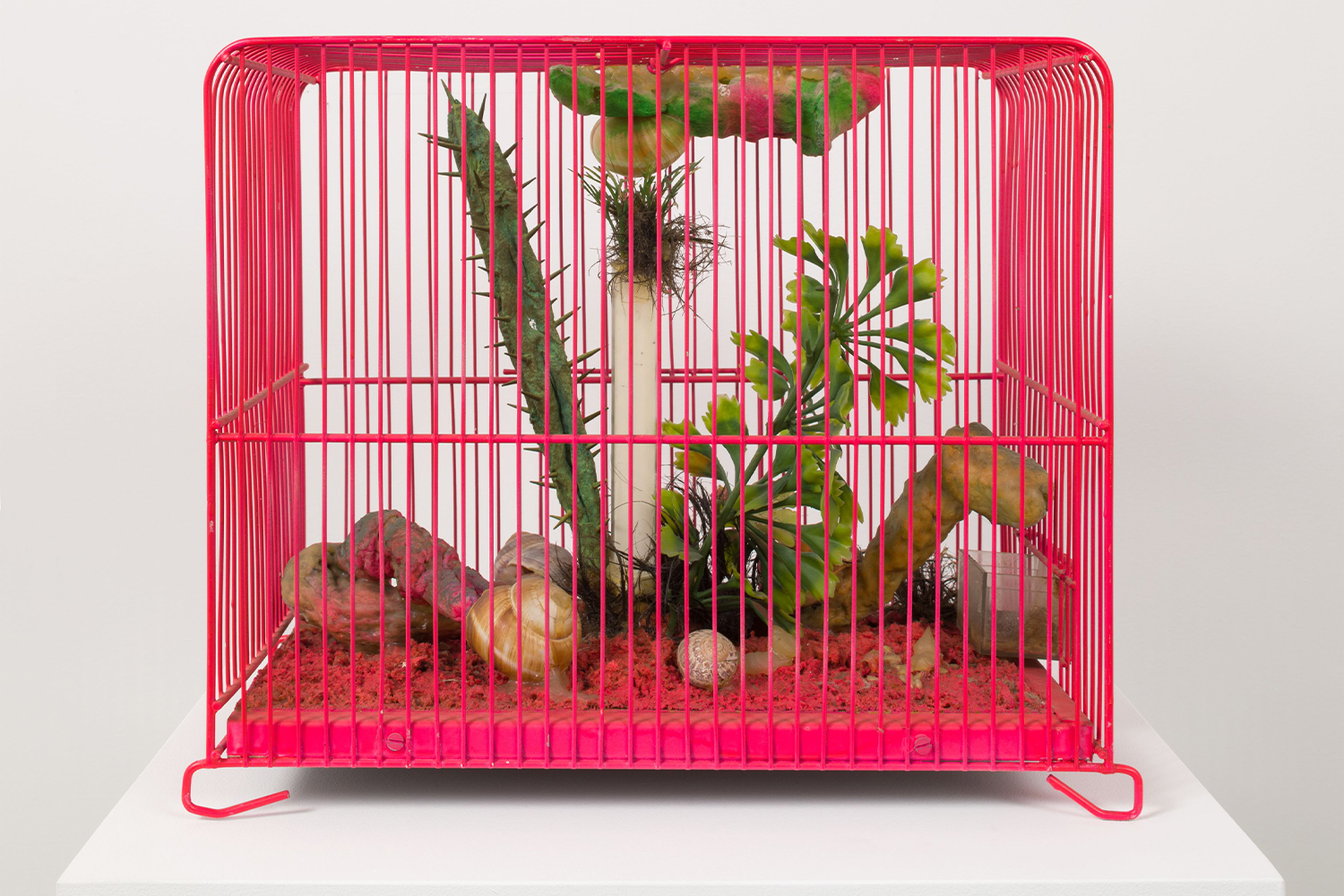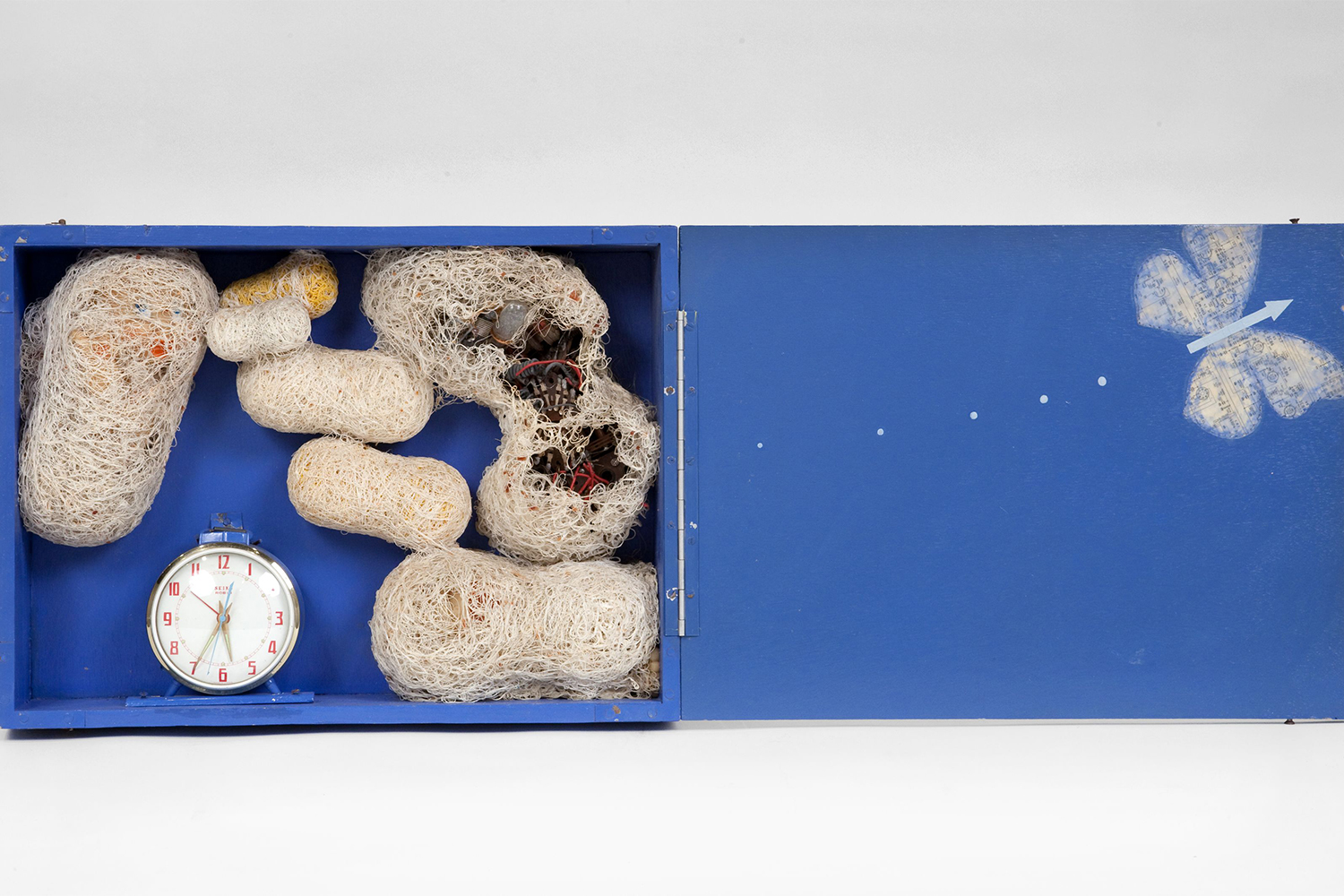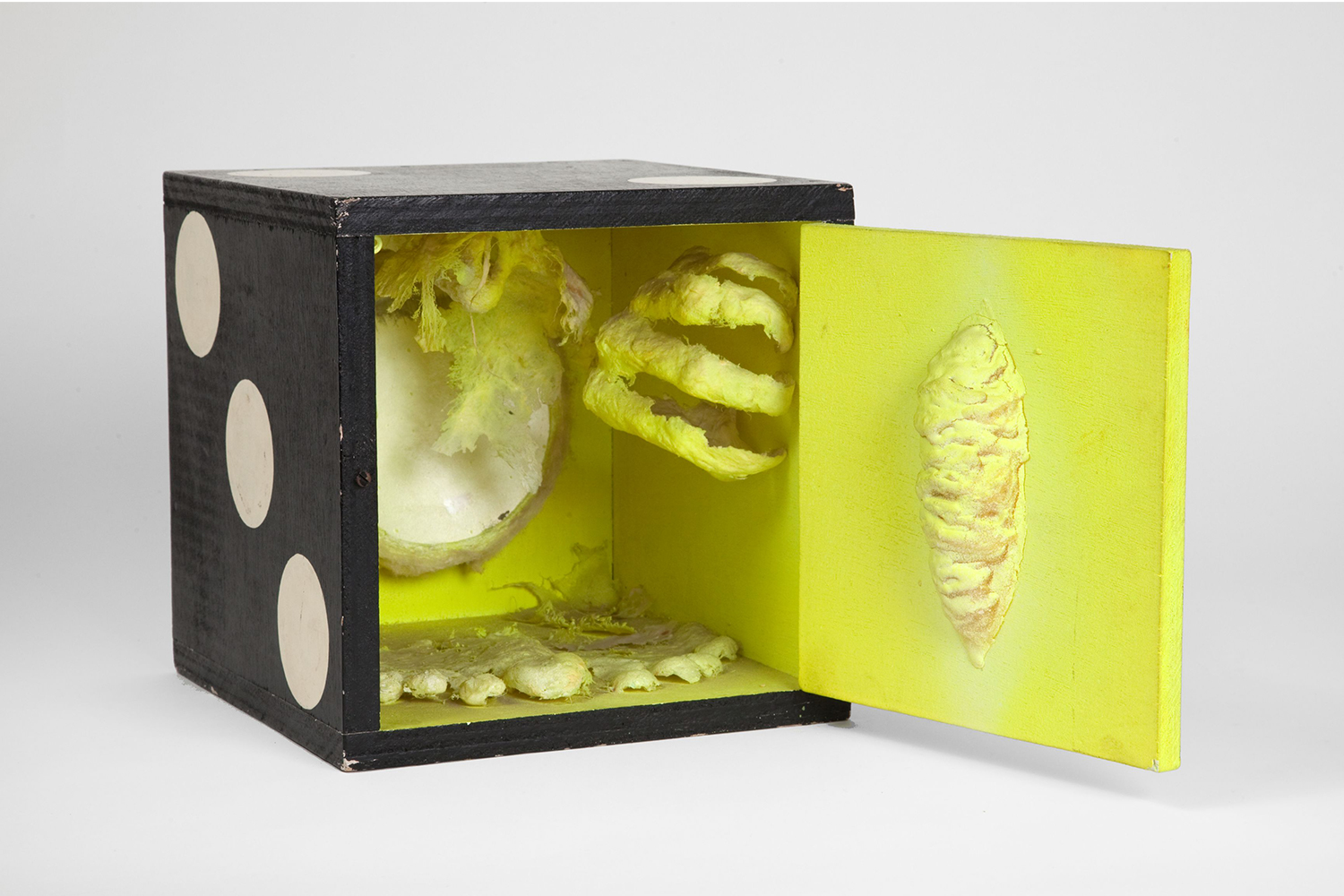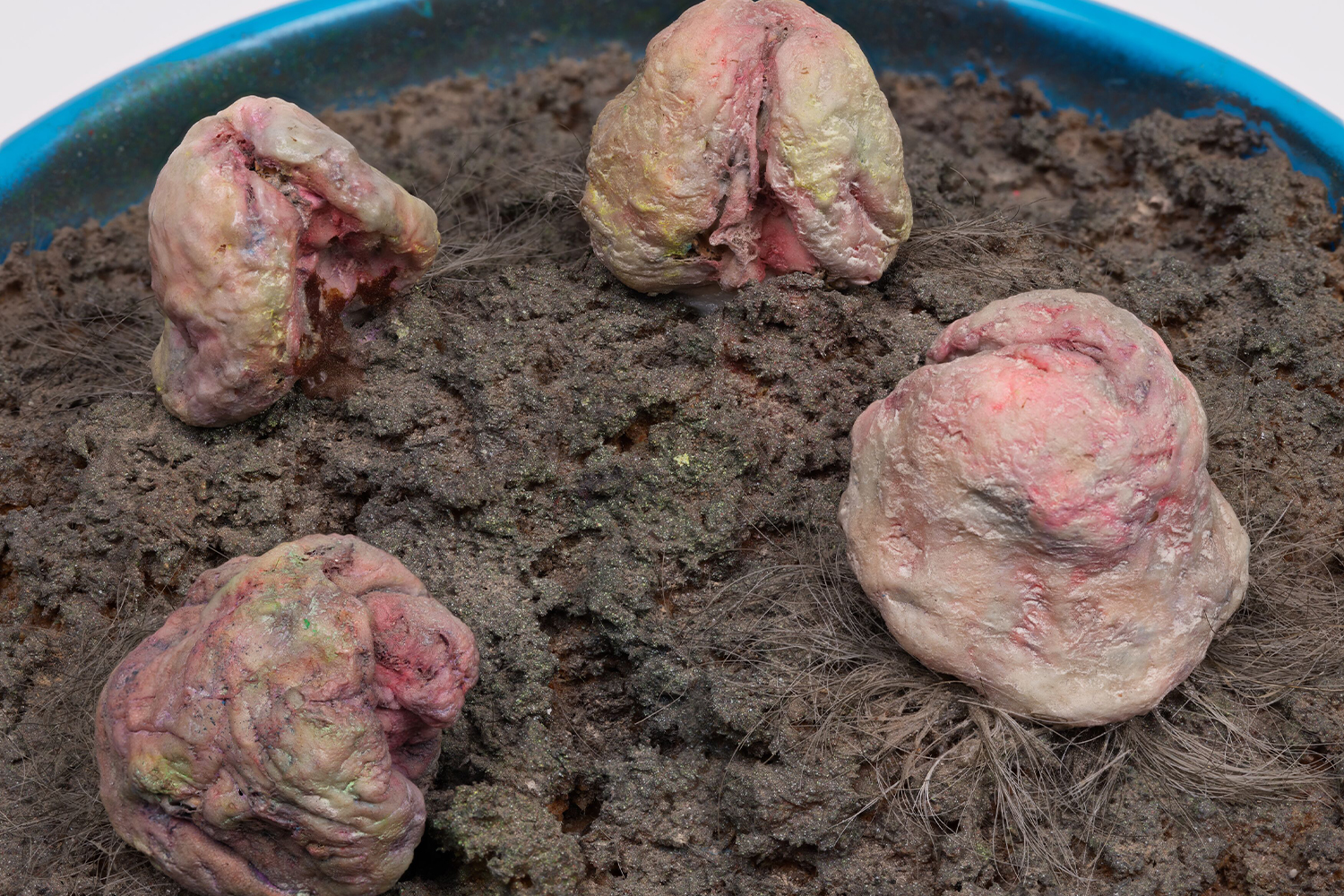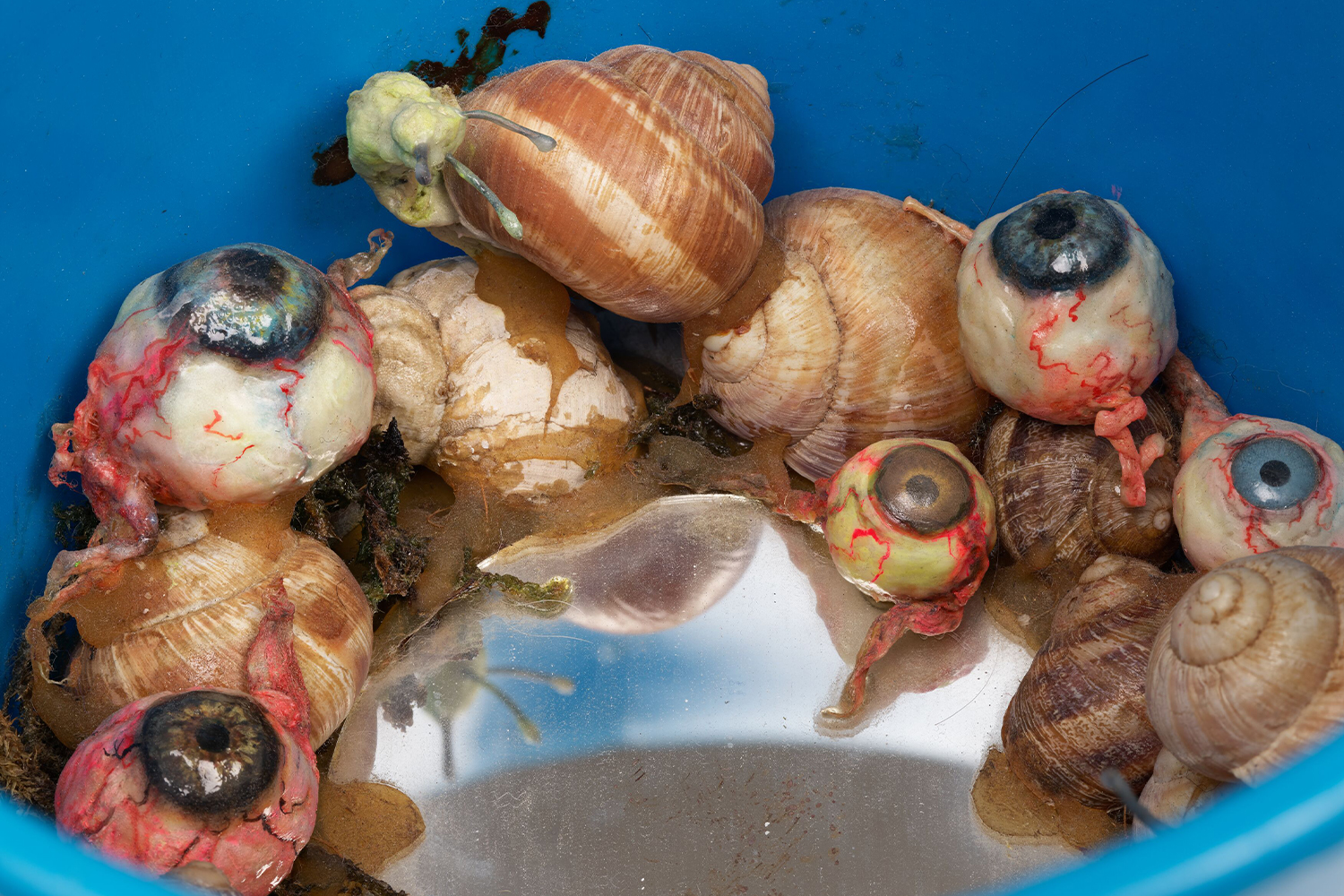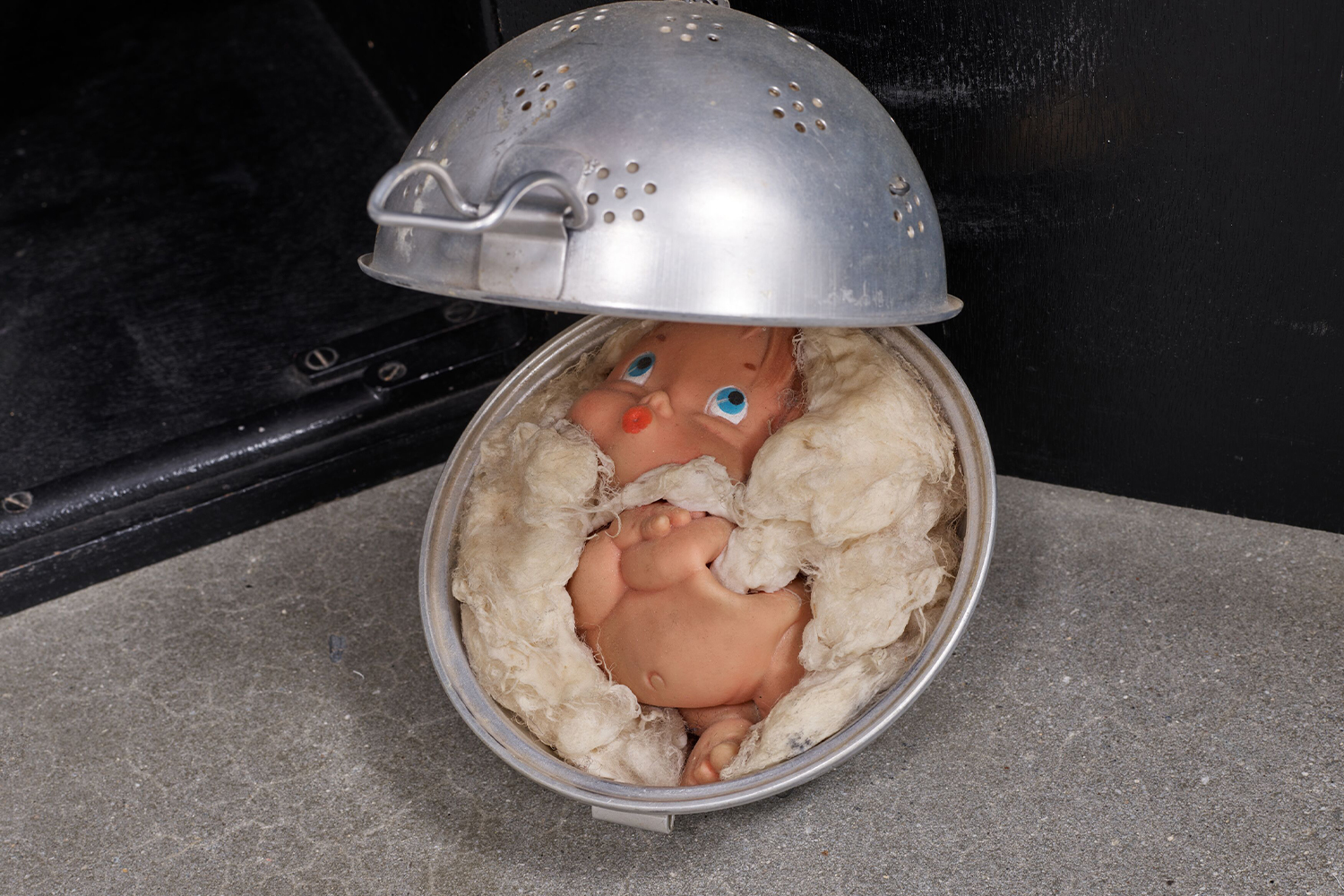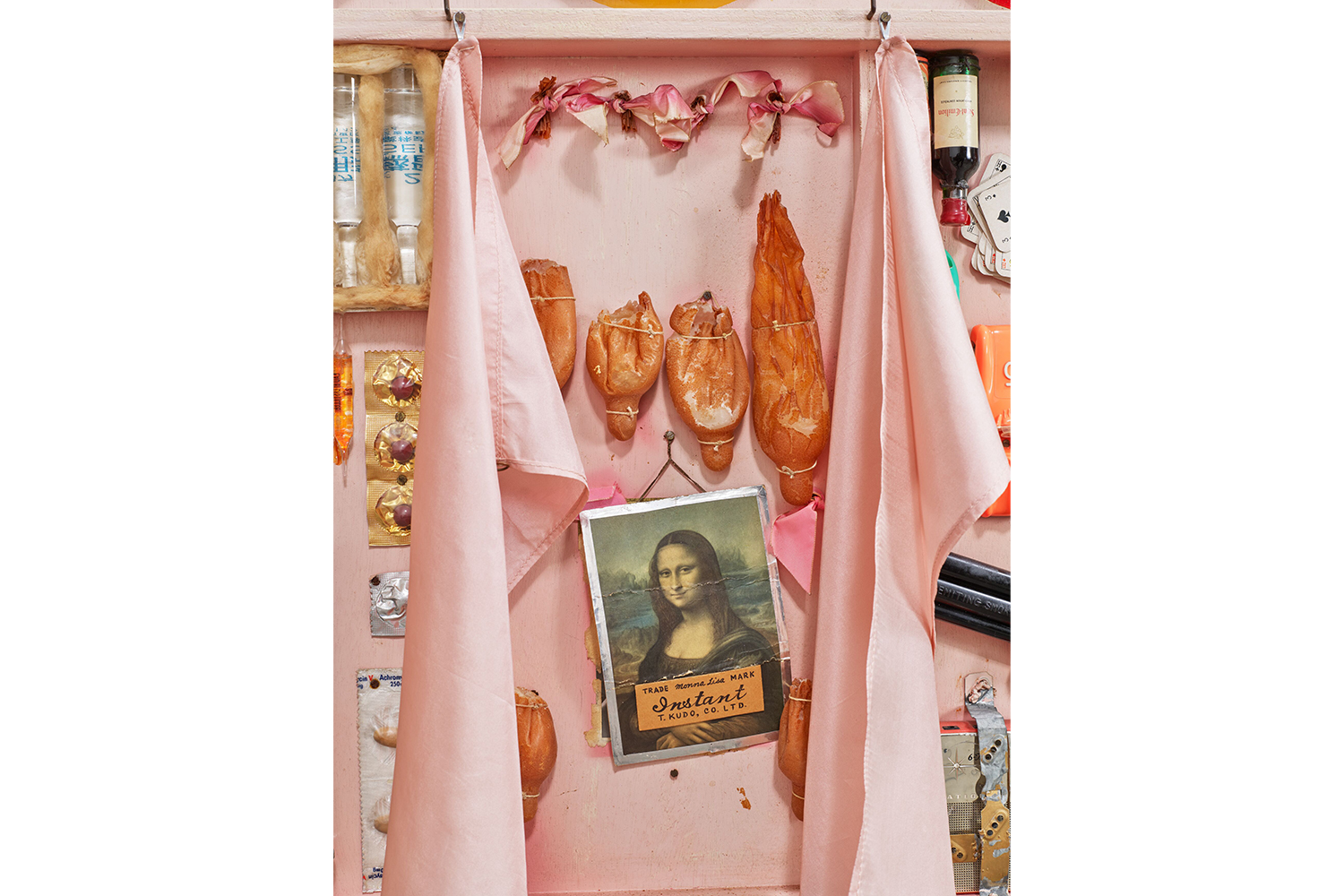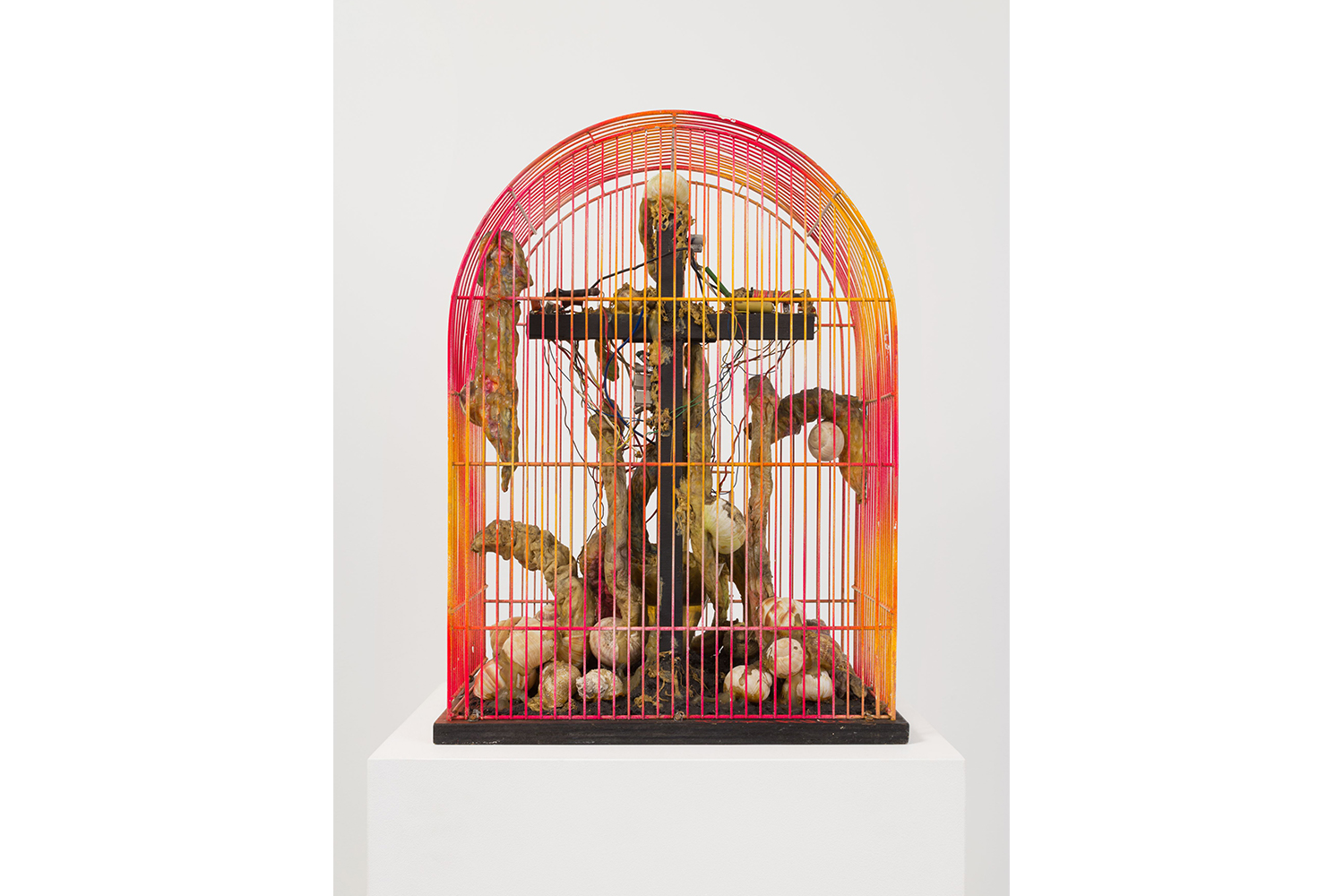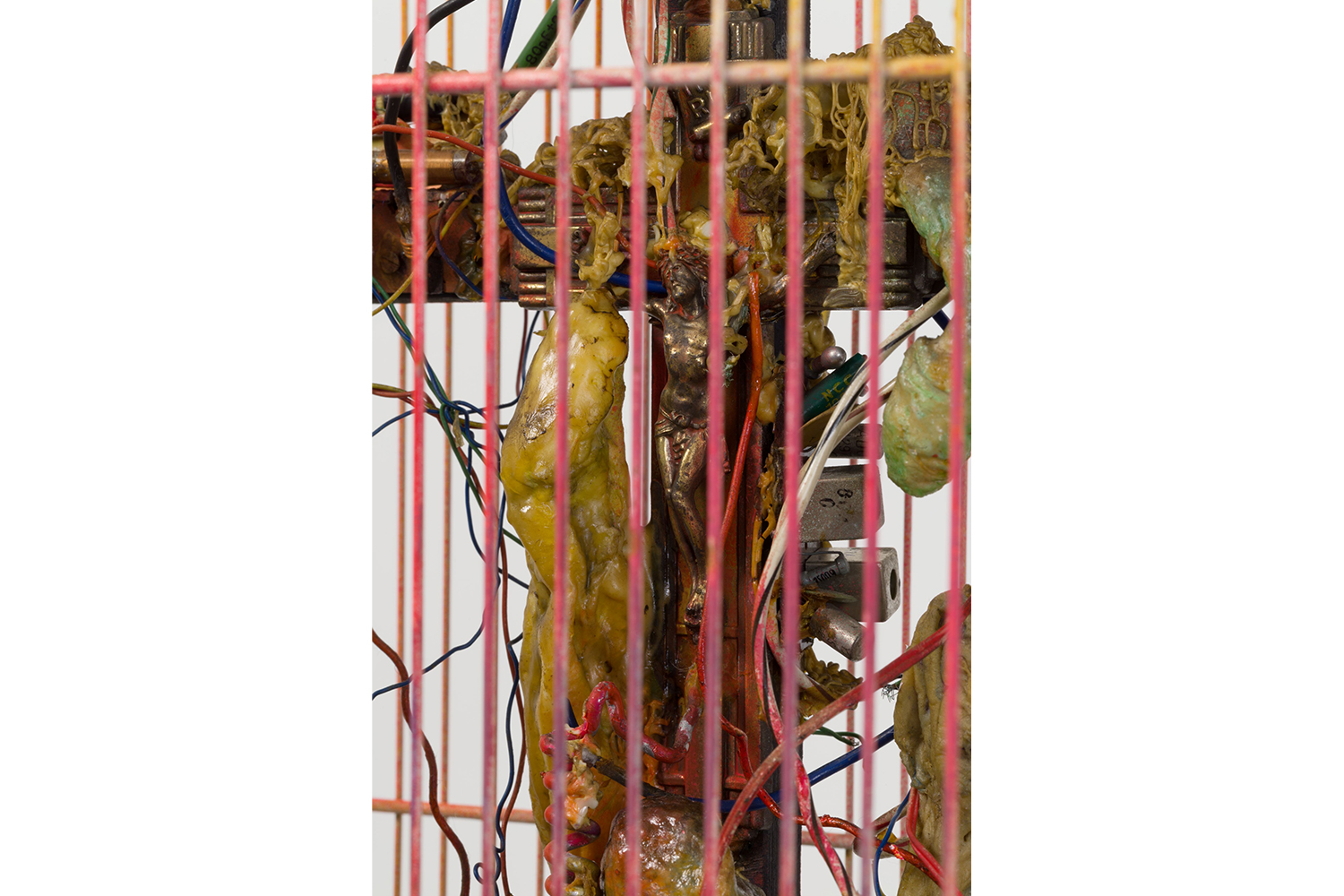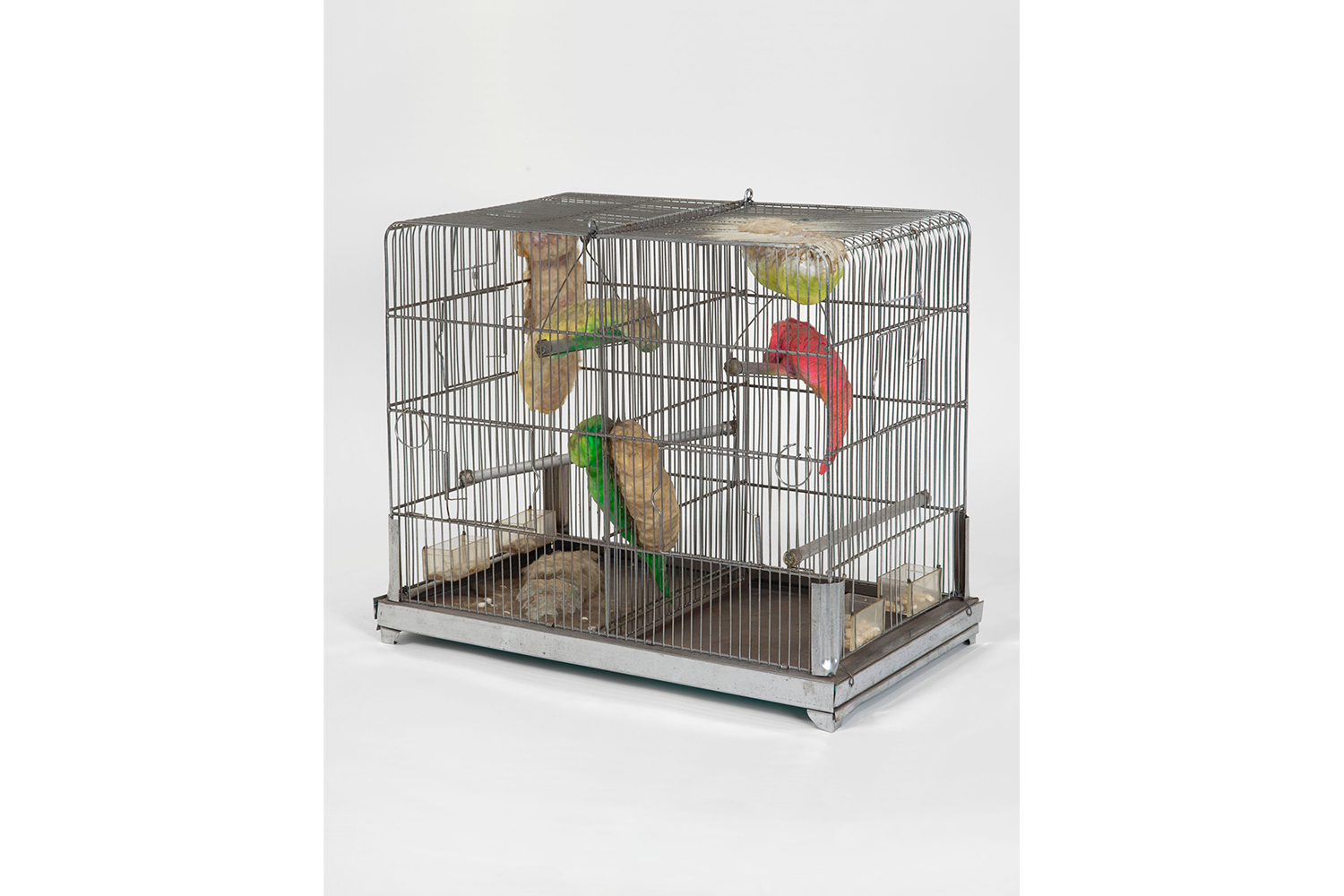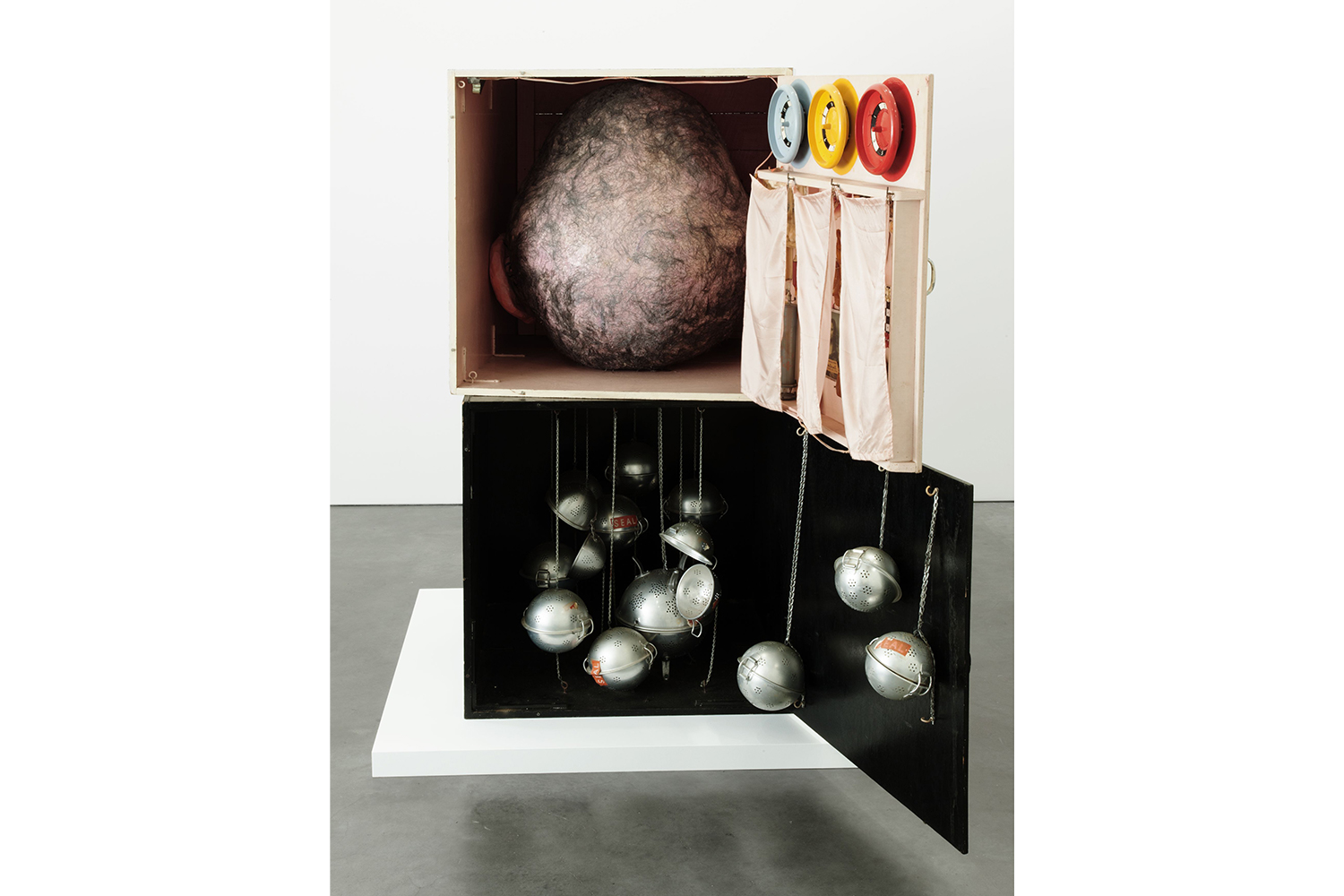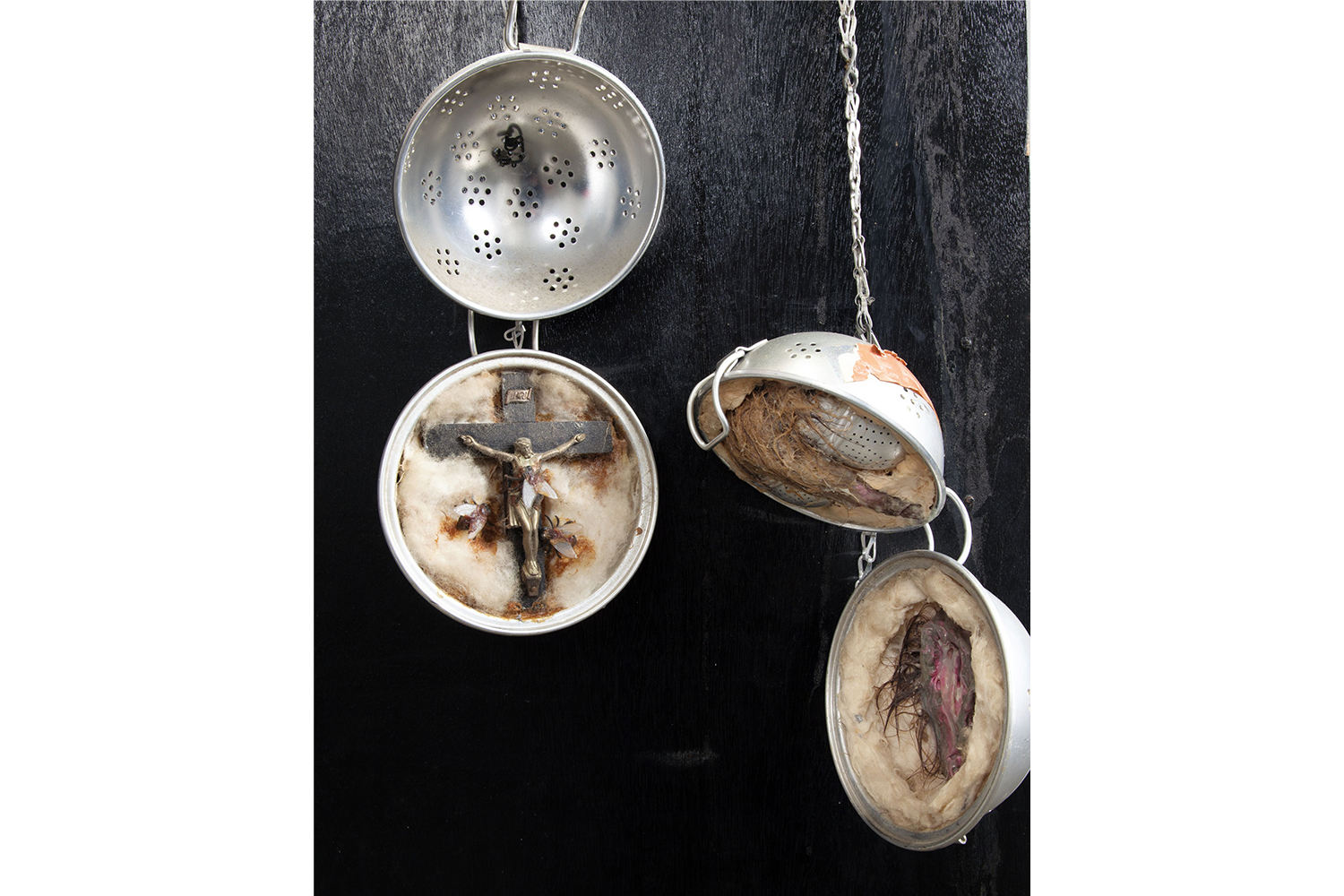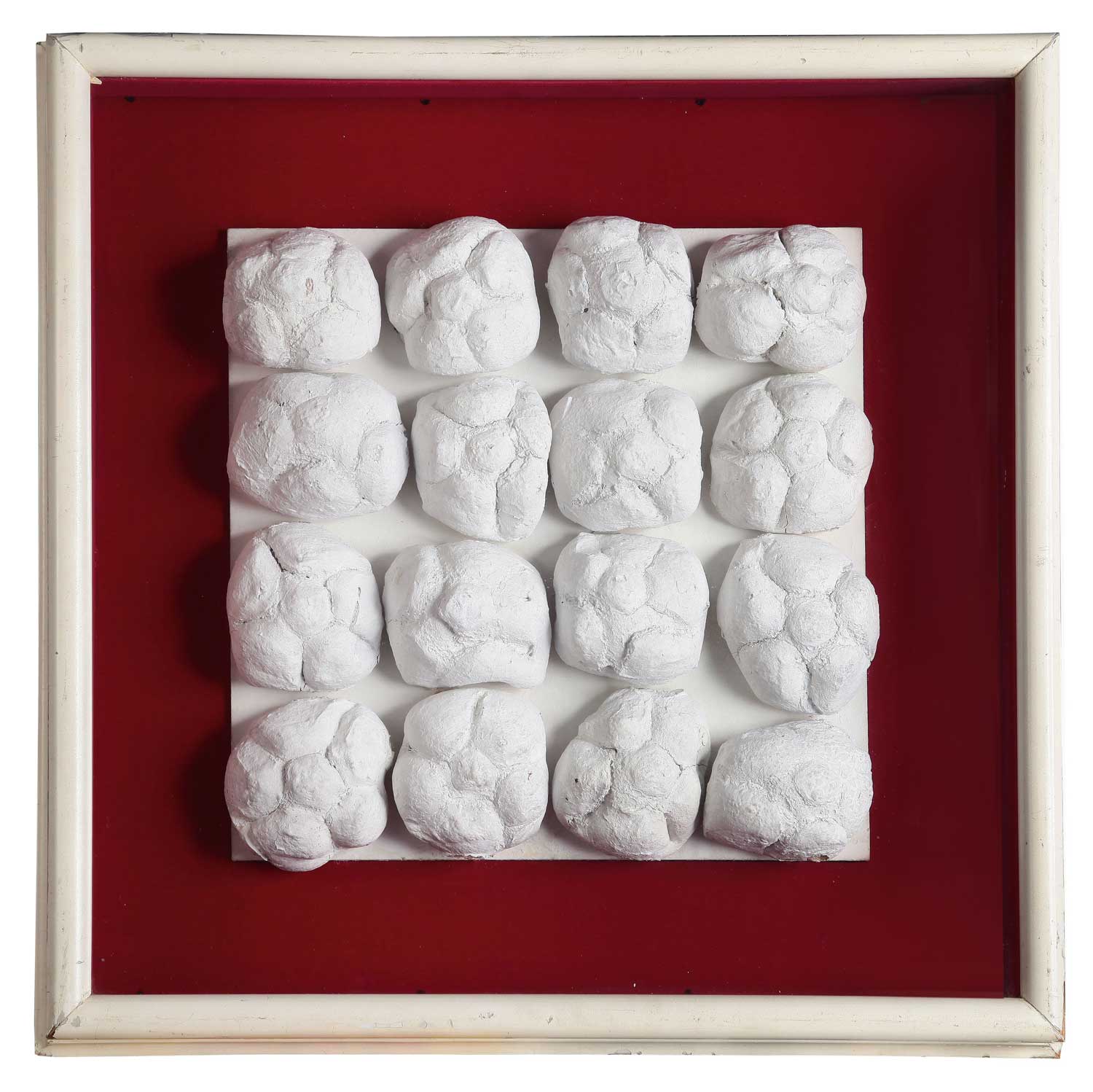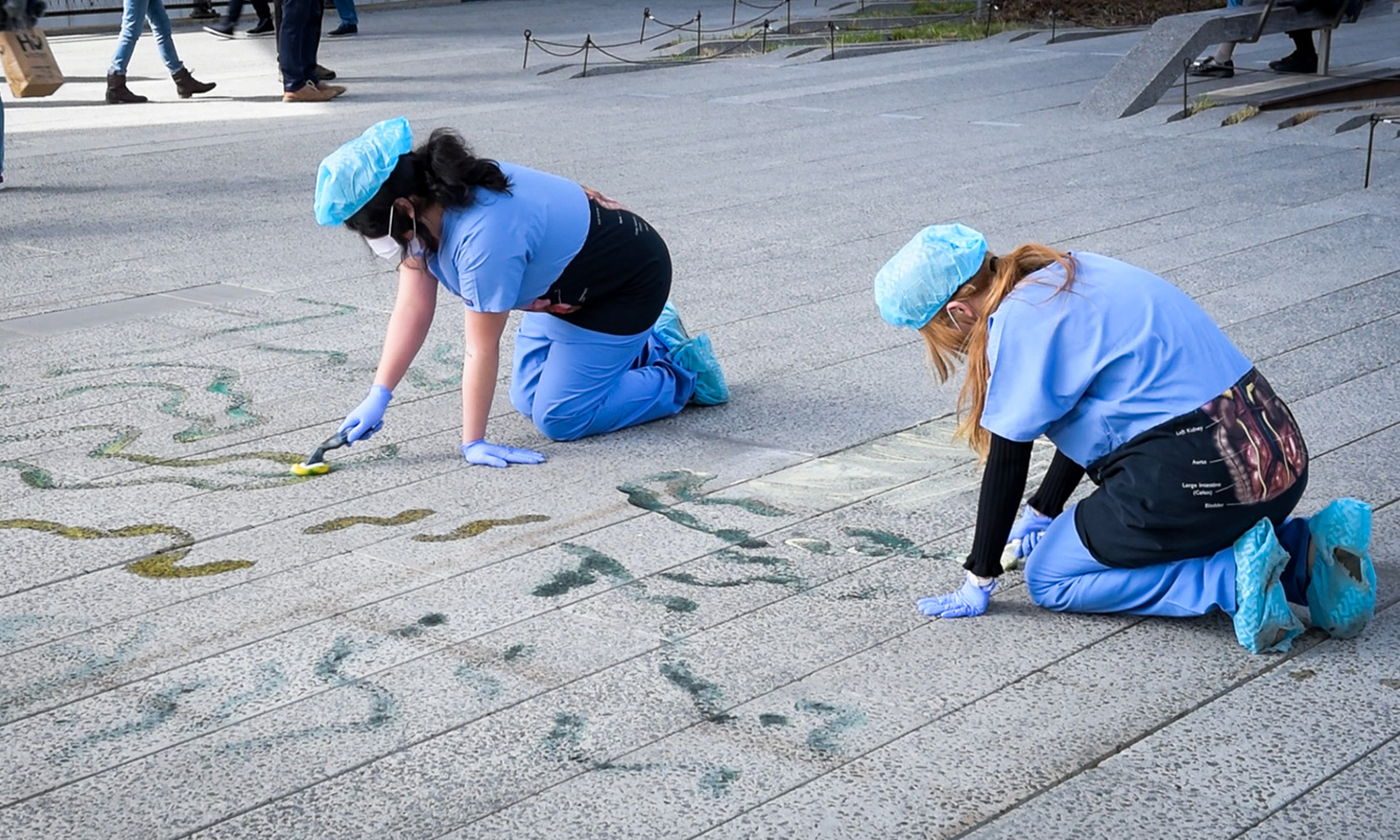Tetsumi Kudo, “Metamorphosis”. Installation view at Hauser & Wirth, New York, 2021.
Courtesy of Hiroko Kudo and the Estate of Tetsumi Kudo. © 2021 Artists Rights Society (ARS), New York / ADAGP, Paris.
Tetsumi Kudo, “Metamorphosis”. Installation view at Hauser & Wirth, New York, 2021.
Courtesy of Hiroko Kudo and the Estate of Tetsumi Kudo. © 2021 Artists Rights Society (ARS), New York / ADAGP, Paris.
Tetsumi Kudo, “Metamorphosis”. Installation view at Hauser & Wirth, New York, 2021.
Courtesy of Hiroko Kudo and the Estate of Tetsumi Kudo. © 2021 Artists Rights Society (ARS), New York / ADAGP, Paris.
Tetsumi Kudo, “Metamorphosis”. Installation view at Hauser & Wirth, New York, 2021.
Courtesy of Hiroko Kudo and the Estate of Tetsumi Kudo. © 2021 Artists Rights Society (ARS), New York / ADAGP, Paris.
Tetsumi Kudo, “Metamorphosis”. Installation view at Hauser & Wirth, New York, 2021.
Courtesy of Hiroko Kudo and the Estate of Tetsumi Kudo. © 2021 Artists Rights Society (ARS), New York / ADAGP, Paris.
Tetsumi Kudo, “Metamorphosis”. Installation view at Hauser & Wirth, New York, 2021.
Courtesy of Hiroko Kudo and the Estate of Tetsumi Kudo. © 2021 Artists Rights Society (ARS), New York / ADAGP, Paris.
Tetsumi Kudo, Cultivation of Nature & People Who Are Looking at It, 1970-1971. Detail.
Plastic bucket, mirrored glass, cotton, artificial soil, resin, adhesive, paint and transistors. 36 x 23 cm.
Photography by Thomas Barratt. Courtesy of Hiroko Kudo and the Estate of Tetsumi Kudo. © 2021 Artists Rights Society (ARS), New York / ADAGP, Paris
New York… In a wide-ranging practice spanning four decades, postwar Japanese artist Tetsumi Kudo (1935 – 1990) explored the effects of mass consumerism, the rise of technology, and ecological degradation on post- war society through satirical, critical, elaborately detailed and meticulously constructed environments that continue to exert a powerful influence on artists today. Opening 5 May, ‘Tetsumi Kudo. Metamorphosis,’ the artist’s first exhibition at Hauser & Wirth New York, focuses upon the late artist’s idea of metamorphosis which emphasizes the need for personal and collective spiritual evolution beyond the values of Western Humanism, which he believed caused war, racism, and colonialism, and alienated people from the natural environment.
Tetsumi Kudo, Cultivation, 1972.
Painted cage, wood, plastic, cotton, paint, snail shells, spray paint, artificial soil, hair, resin and thermometer.
27.9 x 34.6 x 19.4 cm.
Photography by Pierre Le Hors. Courtesy of Hiroko Kudo and the Estate of Tetsumi Kudo. © 2021 Artists Rights Society (ARS), New York / ADAGP, Paris.
Tetsumi Kudo, Your Portrait – F, 1963.
Painted wood case, cotton, plastic, polyester and alarm clock. 29.4 x 40 x 10.2 cm.
Photography by Jessica Eckert. Courtesy of Hiroko Kudo and the Estate of Tetsumi Kudo. © 2021 Artists Rights Society (ARS), New York / ADAGP, Paris.
Tetsumi Kudo, Your Portrait R, 1965-1966.
Wood, paint, plastic and cotton. 29.8 x 29.8 x 29.8 cm. Photography by Jessica Eckert. Courtesy of Hiroko Kudo and the Estate of Tetsumi Kudo. © 2021 Artists Rights Society (ARS), New York / ADAGP, Paris.
Tetsumi Kudo, Cultivation of Nature & People Who Are Looking at It, 1970. Detail. Plastic bucket, artificial soil, cotton, plastic, resin, adhesive, paint and screws. 24 x 23.5 x 23.5 cm.
Photography by Thomas Barratt. Courtesy of Hiroko Kudo and the Estate of Tetsumi Kudo. © 2021 Artists Rights Society (ARS), New York / ADAGP, Paris.
Tetsumi Kudo, Cultivation of Nature & People Who Are Looking at It, 1970. Detail. Plastic bucket, mirror, snail shells, adhesive, paint, hair and screws. 19.1 x 23 x 23 cm. Photography by Thomas Barratt. Courtesy of Hiroko Kudo and the Estate of Tetsumi Kudo. © 2021 Artists Rights Society (ARS), New York / ADAGP, Paris.
Tetsumi Kudo, Cultivation of Nature & People Who Are Looking at It, 1970. Detail. Plastic bucket, mirror, snail shells, adhesive, paint, hair and screws. 19.1 x 23 x 23 cm. Photography by Thomas Barratt. Courtesy of Hiroko Kudo and the Estate of Tetsumi Kudo. © 2021 Artists Rights Society (ARS), New York / ADAGP, Paris.
Tetsumi Kudo, Bonjour et Bonne Nuit (Good Day and Good Night), 1963. Detail. Wood, metal, plastic and mixed media. 134 x 67 x 67 cm. Photography by Thomas Barratt. Courtesy of Hiroko Kudo and the Estate of Tetsumi Kudo. © 2021 Artists Rights Society (ARS), New York / ADAGP, Paris.
‘Tetsumi Kudo: Metamorphosis,’ brings together 18 significant works created in the decade following Kudo’s move from Japan to Paris in 1962. The selection includes highlights from the artist’s signature container works – cubes, cages, buckets, and terrariums – comprising meticulously constructed tableaux; a monumental canvas made with a computer, and examples of his drawings and conceptual sketches related to these series. Kudo intended his seemingly grotesque yet playful scenes as both models of contemporary life and provocations meant to encourage viewers to confrontand put aside the confines of ego and the values of consumerism and to understand themselves instead as part of an integrated and intricate cosmos in which nature, technology, and humanity influenced each other in a system he dubbed the New Ecology.
Tetsumi Kudo, Bonjour et Bonne Nuit (Good Day and Good Night), 1963. Detail. Wood, metal, plastic and mixed media. 134 x 67 x 67 cm. Photography by Thomas Barratt. Courtesy of Hiroko Kudo and the Estate of Tetsumi Kudo. © 2021 Artists Rights Society (ARS), New York / ADAGP, Paris.
Tetsumi Kudo, La liberté de l’étalon, 1972-1977.
Painted cage, artificial soil, cotton, plastic, polyester, resin and string. 45.8 x 34 x 20.3 cm. Photography Pierre Le Hors. Courtesy of Hiroko Kudo and the Estate of Tetsumi Kudo. © 2021 Artists Rights Society (ARS), New York / ADAGP, Paris.
Tetsumi Kudo, Your Portrait, 1966. Detail.
Painted wood and pegboard case, cotton, plastic, polyester, resin and paint.
30 x 30 x 30 cm. Courtesy of Hiroko Kudo and the Estate of Tetsumi Kudo. © 2021 Artists Rights Society (ARS), New York / ADAGP, Paris.
Tetsumi Kudo, La liberté de l’étalon, 1972-1977.
Painted cage, artificial soil, cotton, plastic, polyester, resin and string. 45.8 x 34 x 20.3 cm. Photography Pierre Le Hors. Courtesy of Hiroko Kudo and the Estate of Tetsumi Kudo. © 2021 Artists Rights Society (ARS), New York / ADAGP, Paris.
Tetsumi Kudo, For Your Living Room – For Nostalgic Purpose, 1966. Cage, cotton, plastic, polyester, resin, paint and pills. 43.5 x 50.8 x 30.5 cm. Photography by Jessica Eckert. Courtesy of Hiroko Kudo and the Estate of Tetsumi Kudo. © 2021 Artists Rights Society (ARS), New York / ADAGP, Paris.
Tetsumi Kudo, Bonjour et Bonne Nuit (Good Day and Good Night), 1963.
Wood, metal and plastic.
134 x 67 x 67 cm. Photography by Lance Brewer. Courtesy of Hiroko Kudo and the Estate of Tetsumi Kudo. © 2021 Artists Rights Society (ARS), New York / ADAGP, Paris.
Tetsumi Kudo, Bonjour et Bonne Nuit (Good Day and Good Night), 1963. Detail. Wood, metal and plastic.
134 x 67 x 67 cm. Photography by Lance Brewer. Courtesy of Hiroko Kudo and the Estate of Tetsumi Kudo. © 2021 Artists Rights Society (ARS), New York / ADAGP, Paris.
Kudo understood metamorphosis on several levels – as a biological process, a social phenomenon and as a metaphor for the spiritual evolution he believed was necessary. Kudo’s aesthetics and philosophical considerations were influenced by his early interests in biology, set theory, astrophysics, quantum mechanics, and popular culture, and were inflected by post war debates in Japan and Europe about societal evolution after World War II. Kudo’s micro-worlds cultivate an uncanny fusing of imagery derived from the artist’s highly personal visual lexicon that includes eyeballs, crawling penises, cacti, plastic flowers, pills, transistors and thermometers. His ‘visual maquettes’ draw viewers into a world of mutations and self-organizing biological systems that reflect the desolation and decay mankind has wreaked upon the macroscopic world.

